Koopalings, Airships and Tanookis Oh My! - Mario Mania #3
The finale of the NES trilogy is truly a classic to behold.
Greatness in Thirds
Shigeru Miyamoto’s right hand man when it came to designing the NES trilogy was Takashi Tezuka. While I mentioned Tezuka’s name in Mario Mania #1, I didn’t go over in great deal what his true role was in the Mario series as a whole. Miyamoto gets most of the credit when it came to Mario games, but Tezuka was really the one pulling the strings together. Tezuka was also the directorial lead for Super Mario World and A Link To The Past, both considered among the best of the SNES games. SMB3, if you look at it more closely, shows a lot of Tezuka’s design qualities; it was the first Mario game in the mainline series to have a non-linear map system and flying.
Super Mario Bros. established the basic fundamentals of the mainline Mario series, but has a few annoying flaws within the system it built. SMB2 USA, despite not being a Mario game to begin with, introduced many welcome additions to the Mario series such as non-fixed scrolling and grabbing objects and enemies; however, it was technically shorter with fewer levels. Super Mario Bros. 3, in many ways, is a marriage between both games that fixes the flaws both games had. Both weren’t very long games (with or without the warp pipes), and for better or worse, both were quite linear in design. Returning from SMB1 is the score counter and item system, and from SMB2 USA is the ability to grab items (though it is done differently). And while I hate to admit it, the Lost Levels did bring something to SMB3: the ability to jump higher after you have jumped on an enemy. Basically, in a lot of ways, SMB3 is an expansion of SMB1, but sprinkled with SMB2 USA’s more unique features.
Yet it would be unwise to think SMB3 as anything but an expansion of SMB1. In fact, if anything, SMB3 is the game that solidified the 2D Mario series as a whole. The first element that many people noticed when they first started the game was the map system. From the very first world, you can move Mario on a fixed line on the world map to a level panel. Once the level is completed you move Mario to the next level. Sounds simple, but let’s use World 1, Grass Land, as an example. After you complete World 1-2, you are given something the previous two Mario games didn’t have: a choice of which level to go to next.
You now have a choice to go to either World 1-3, 1-4, or a mini-fortress. There is also something you might have noticed besides the mini-fortress and level panels; a ‘spade’ panel and a mushroom shaped house. The former is one of two mini-games - a first for the series. The first, a slot mini-game, gives out 1ups as a prize for matching up a picture of a Mushroom, Fire Flower, or Starman. The latter is a Toad-owned house that gives out one of three items (or just one, depending on the house): the Super Mushroom, Fire Flower or the Raccoon Leaf. After completion of a level, you are allowed to travel on the lined path to another level, though many a time your choice will be limited.
What led to SMB3’s rise to fame was its level design and game play. SMB3 feels just plain right with whatever controller you are using (NES Pad, Wiimote or SNES Pad). SMB1 and SMB2 USA both have great controls, but SMB3 feels smooth and not too stiff or too loose. Everything is responsive, and not once will the controls lead to your downfall. Thank goodness for that, because the flying mechanic introduced in this game controls like a dream. Whenever you are Raccoon or Tanooki Mario (or have used the P Wing), if you run at full speed and jump continuously, you will fly. Unlike flying in later Mario games, flying isn’t difficult to control. The flutter jump also helps in tricky platforming situations. Returning from SMB2 USA in limited form is grabbing; Mario can hold onto Koopa shells and certain blocks by holding the ‘B’ button.
World 1 and World 2 can be cake walk for some, but World 3 and onward is where the game starts to throw many challenging levels at you. SMB3 pulls out all the stops when it comes to diverse levels. Some levels are straightforward, while others are devious mazes or auto-scrolling. However, while the levels in World 3 and on can get tricky, even downright nasty; enemy and item placement are well-done and you are given enough warning for any dangers that may be ahead. SMB3 wants you to win, but it doesn’t want you to succeed so easily. It also doesn’t want you to get a Game Over either, because the new end goal mechanic loves giving 1ups. A card is handed out at the end of each level and after three you get a 1up, but with three of the same image you can get up to five (and a nice tune to go with it).
Now then, do you remember the castles at the end of each world in SMB1? They are kind of back, but are now in the form of mini-fortresses. Imagine all the little gimmicks like Podobos and Fireballs, but replace the latter with Boos, Roto Discs, spiked floors, Throwps and a creepy background music track. At the end of every mini-fortress you fight a Boom-Boom, who can fly, move fast, and/or jump randomly. After three hits, you kill him and beat the level. Beating the level will unlock the locked doors you see on the map, unlocking shortcuts if by any chance you lose all your lives and have to start over. The end world level, an auto-scrolling airship level, has enough cannon balls and Bullet Bills shooting around to make them hell. The screen also moves in many different directions. At the end of these airship levels (sans World 8), you face off with a Koopaling. Beat him/her, get the wand and move on to the next world. Before a new world, (aside from World 8), you receive a letter from Peach as she gives you useless hints and an item. As you can see, her usefulness takes a huge dive from SMB2 USA.
So the game is great, no? Yes, it is, but while many people claim Super Mario Bros. 3 to be the perfect Mario game, it kind of isn’t, if you’re playing the NES version on the NES console itself. SMB3 is huge, over one hundred levels, and there is one horrid flaw I cannot forgive: no save feature. Games like Zelda and StarTropics, both from Nintendo, had save features. True, you could technically use a Warp Whistle to warp directly to World 8, but half the fun is going through all the levels. Imagine being the poor kid who has to start SMB3 over after getting to World 4 only to discover your NES was accidentally turned off. Another nagging flaw is the swimming. SMB1 had great swimming controls, but in SMB3 they are slow and stiff, a major difference from the land-based levels. The Frog Suit does help in this regard; though it would be almost twenty years until Nintendo manages to make a power suit that works on both land and water (hello Penguin Suit).
SMB3 is considered by Mario fans to be the pinnacle for unique items in the Mario universe. All things considered, they are and they are not. Let’s start with the basics: the first three main items return from SMB1. In addition, the Raccoon Leaf/Tanooki Suit allows you to fly, and is pretty rad, as is the Hammer Bros. Suit, which allows Mario to throw hammers and get a tan at the same time. Warp Whistles warp you to Warp Zone and can be used to cheat your way right to Dark Land (you cheater), but there are only three in the entire game. The Frog Suit, as mentioned previously, helped with swimming levels, but god forbid you use the damn thing on a non-water level. Other items range from semi-useful (Lakitu’s Cloud for skipping levels) to absolutely worthless (Anchor, anyone?). So while SMB3 has a high item count, the only real items that make a difference are the main ones that appear frequently.
How do the audio and visual elements stand up? In terms of graphics, SMB3 easily stands above both SMB1 and SMB2 USA; the NES color palette is given a workout that easily shows with the vast amounts of color used in the different worlds. While a lot of the backgrounds use solid colors, some mini-fortresses use a unique tile background and the airships have floating clouds that pass by as the screen scrolls. Enemies and foreground environments have taken a huge step forward and have a much bolder outline; enemies in general, including the NPCs, now look closer to their official artwork. The background music probably has one of the most infectious tunes within the entire Mario series, courtesy of Mario composer Koji Kondo. The athletic theme, played during many of the auto-scrolling stages, is a fan favorite; the theme plays in a guessing game in Luigi’s Mansion, and in the Mario Galaxy games. This theme will also play in the upcoming Super Mario 3D Land.
If there is one nagging flaw I have with the graphics, it's the bad graphical flicker. It pops up in every level, and if you have played the NES version on the Wii Virtual Console, you will notice the left side of the screen is a solid color. This annoying graphical glitch was thankfully fixed in the All-Stars version.


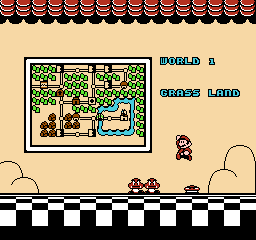
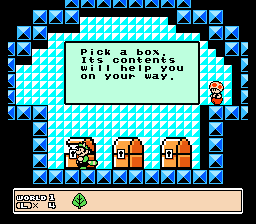
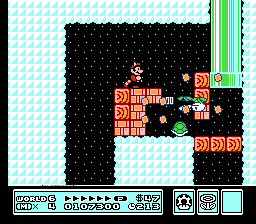
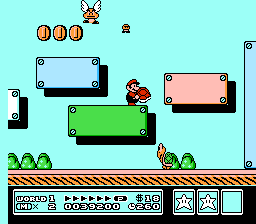
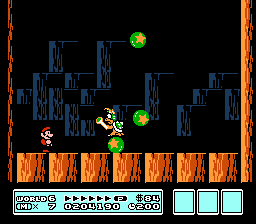
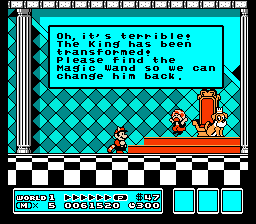

Comments